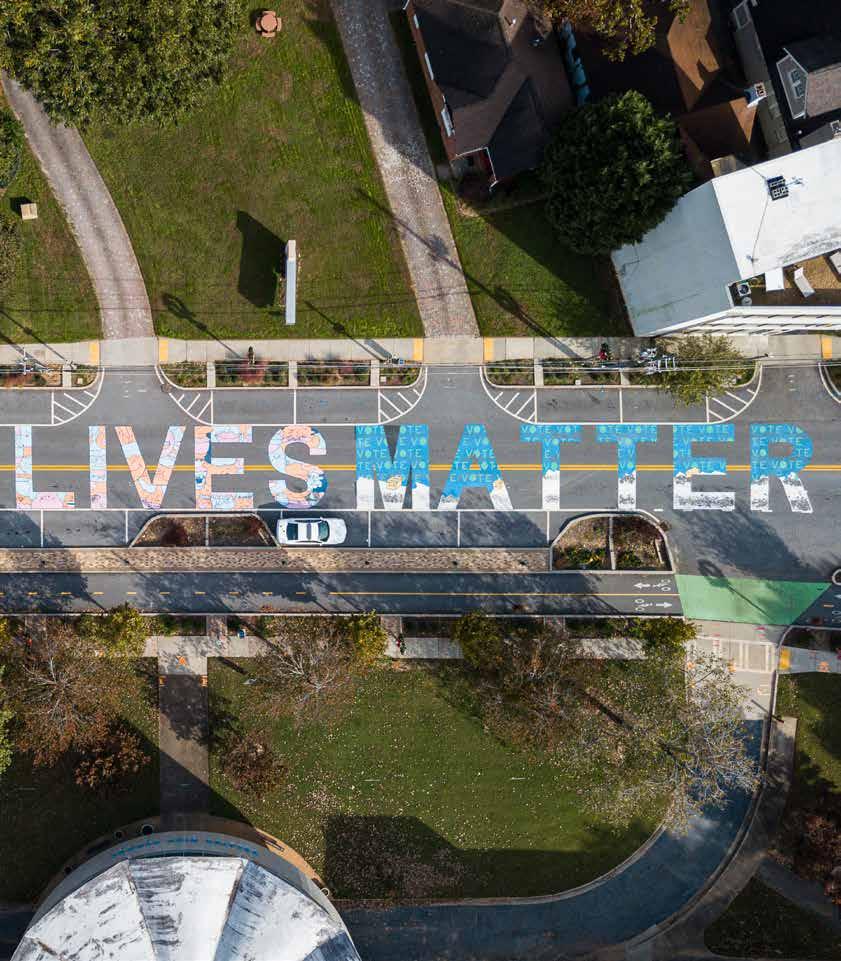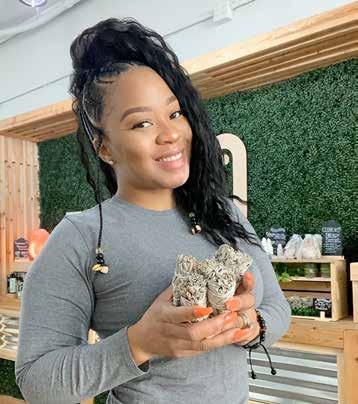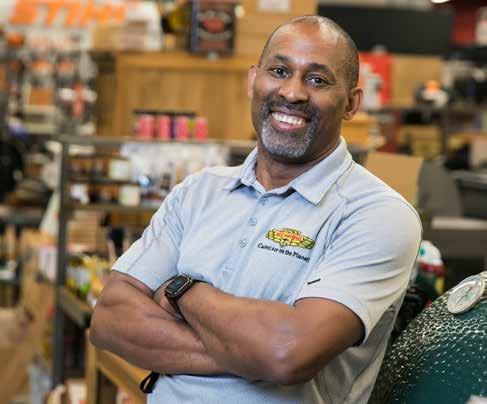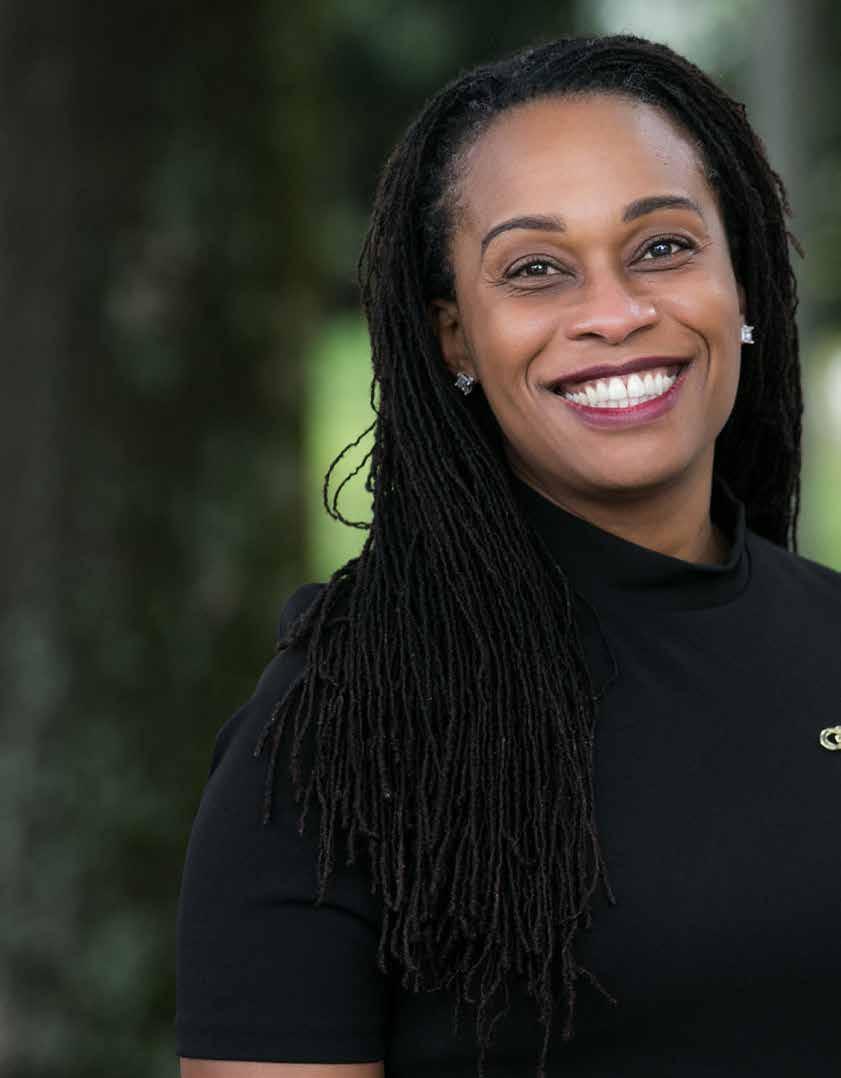
6 minute read
BLM Then and Now
by Breya Rodgers
Making Decatur Even Greater, Together Continuing to flourish as a community
DURING A CHAOTIC YEAR brimming with tragedy and tremendous uncertainty, former Decatur Mayor Elizabeth Wilson is hopeful. As the first woman and first Black mayor of Decatur, Wilson remembers how much has changed saying, “It was so different when I lived in Decatur, it was so separate.”
Despite ongoing racial inequities and the global turmoil of 2020, Wilson is heartened by the next generation. “I am very pleased seeing young people get involved to make a difference in the community,” she says.
Wilson’s sense of hope seems to be a shared sentiment. As #BlackLivesMatter trended on social media in the wake of world-wide protests against police brutality and racial injustice, the Decatur community sought to understand and address the anguish.
“My hopes for our community are rooted in the struggle to maintain economic and racial diversity,” said City Commissioner Tony Powers. “We need to be intentional to have a community that welcomes differing faces and views, welcoming the young and old … My hope is we all listen to each other and work together to continue a collaborative effort in this city to build community.”
That hope and collaboration manifested in a Black Lives Matter mural on North McDonough Street in Decatur. Following the removal of a divisive Confederate obelisk in Decatur Square in June, Powers recalls requests from several residents, “young and old, Black and White,” to implement social change. The city commission allocated $50,000 to address community concerns, with a portion of those funds to be used for a public art project per residents’ requests. Together with artists’ supervision, the mural was envisioned and completed by the community. “I’m extremely happy with the finished project,” Powers says.
Local businesswomen and store owners, Bunnie Hilliard and Ty Jenkins describe experiencing the collective goodwill of residents and an outpouring of support. With the popularity of #SupportBlackBusiness on social media, people around the country began focusing their purchasing power towards Black-owned businesses.

“Honestly it was a bittersweet pill,” shares Hilliard, owner of Brave + Kind Bookshop. “While grateful for the support during these uncertain times, grateful for the recognition of our mission and what we created, there was still a lot of emotion and sadness, frustration about the catalyst of it all,” she mused.
Hilliard adds, “Decatur folks have always been supportive of the space we created in the Oakhurst neighborhood. I crowd-funded the seed monies to get off the ground. I remain hopeful that we will continue to value that mission together.”
The pandemic has been tough on all business owners and the city has worked to ensure businesses continue to flourish in Decatur. “The city allocated $400,000, and the Development Authority and Decatur Legacy project supplied an additional $160,000 to a small business loan program for our local businesses,” Powers explains. “While this did not specifically target Black-owned businesses exclusively, we hoped to provide local assistance where national efforts fell short.”


Ty Jenkins
While Black business owners face unique challenges, they also express that the local community acknowledges these inequities and works to create a city of growth and support for local business.
“I really appreciate the diversity in the area and think it’s important that the children and people in the community get to see someone like me owning and operating a positive and successful business,” says Jenkins, who owns Olive Branch Wellness. “Especially when you consider the history of Decatur.”
Wilson points out that Decatur has done incredible work to welcome people from all backgrounds and create a safe space to live, work and play together. While there is still progress to be made, the community stands out as a city taking steps in the right direction. “If young people can work together, we can have this community that John Lewis and I talked about,” she said. “I’m supportive of young people. If anyone can have a diversity motto, Decatur is it.”

small iron horse scultures

leather.. catchall trays hand blown glass carafs

scented candle
pheonix wing sculpture
quartz stones on stands
Visit us in Downtown Decatur to Shop Local Gifts this Holiday Season www.trinity-decatur.com | 404.378.0197
by XXXXX XXXXXXXX by Lynne Anderson

Setting the Standard for Higher Ed Georgia Tech dean takes on virus control efforts
WHEN THE CORONAVIRUS shut down the country in March, Nisha Botchwey had to think about the well-being of her students — all 36,488 of them. As the Associate Dean for Academic Programs at Georgia Tech Professional Education (GTPE), Botchwey is one of many who came together to ensure continuity of instruction for students.
“GTPE was brought in to support our continued instruction with best practices from remote instruction, given our 40-plus year history as Georgia Tech’s global campus leading all online, distance and remote learning,” she said.
The first goal was to ensure the health and welfare of the students, faculty and staff. Second was to ensure student learning. As one of the nation’s top 10 public universities and an engineering school of worldwide renown, Botchwey said there was no time to lose. Students needed and deserved the instruction that Tech is known for throughout the world.
That plan immediately involved switching students to remote instruction.
“We realized we can’t just wing it,” said Botchwey, who is also director of Georgia Tech’s Healthy Places Lab. By early April, Tech created the Georgia Tech Remote and Hybrid Teaching Academy, a partnership of several departments and committees coming together across campus.
Every teacher was enrolled in the academy, with instruction for how to engage students remotely. The focus was on “fundamental pedagogical and technological skills, as well as best practices.”
Faculty were suddenly in online classes, too, learning how to teach remotely to enhance the students’ learning experience.
“Maybe someone can’t hear, or someone loses interest,” Botchwey said. Coming up with solutions that would meet the range of issues is “challenging but not insurmountable.”
Tech came up with three options for students — those in residential mode, those who study and attend classes remotely, and a hybrid version where students attend classes online but come to class for some engagements. The migration to these modes involved setting up cameras, microphones and plexiglass walls. Various committees are now meeting regularly to plan for 2021.
Botchwey points out that none of those ideas could have been implemented if Tech hadn’t instituted policies to control the spread of the virus.
“A critical component of Georgia Tech’s response is our surveillance testing,” said Botchwey. The approach includes testing people without symptoms to catch infections before a person is contagious and minimize community exposure. “We have the capacity to test up to 2500 people a day.”
The plan seems to have worked — the latest test positivity rate is less than 0.77%, well below the 5% rate the World Health Organization says is an acceptable goal.
Students, faculty and staff complete surveillance testing weekly and protect each other. “It’s what we do at Georgia Tech,” Botchwey said. “We use technology to improve the human condition. We’re the Yellow Jackets. We care about our people and our communities.”







